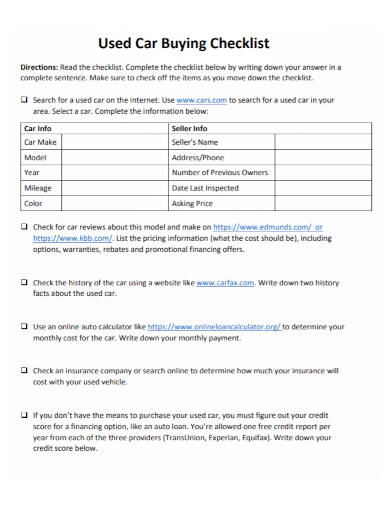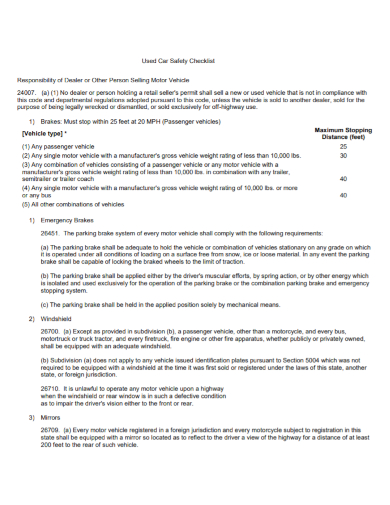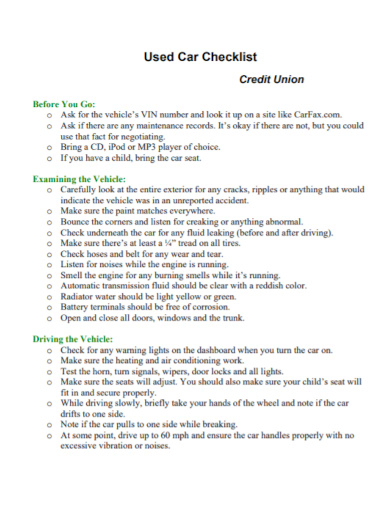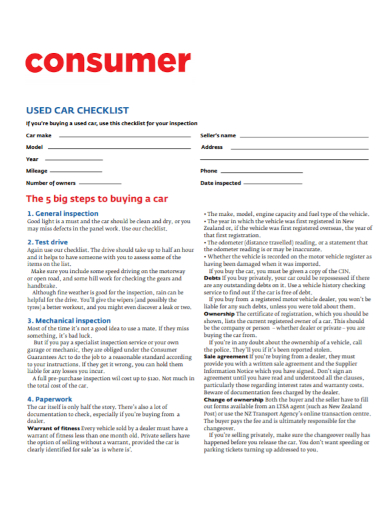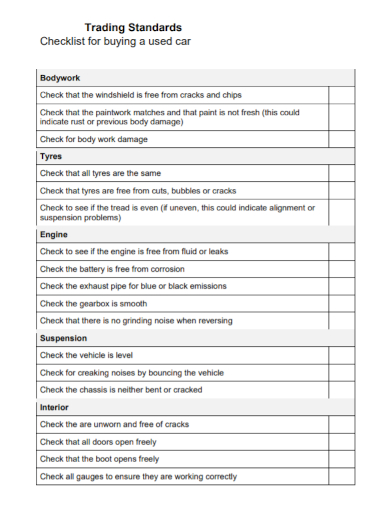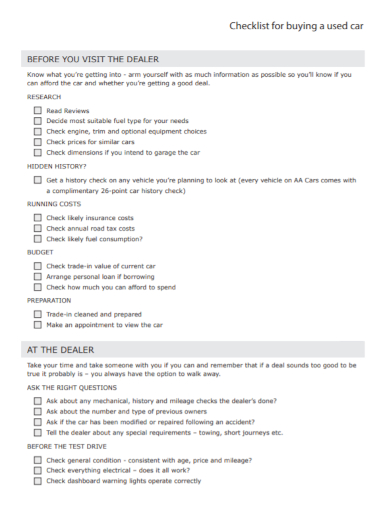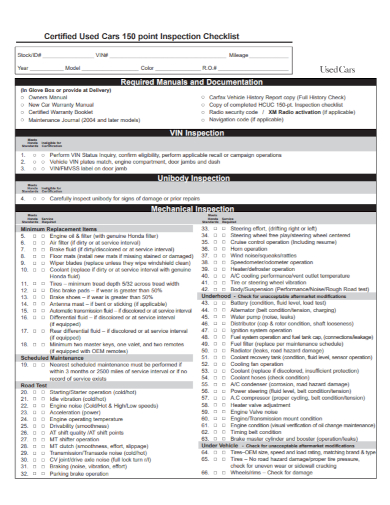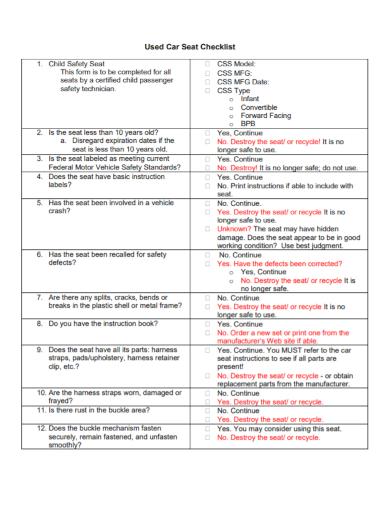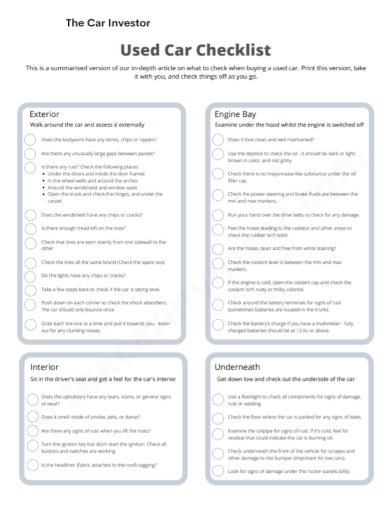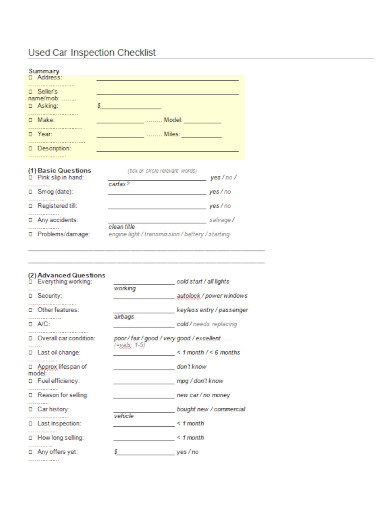Buying a used car can be really scary for most. Owning a car is a huge privilege and it does require quite a bit of money. Of course, no one wants to waste all of their money having bought a car with heavy substantial defects. A ‘lemon’ so to speak. Buying a lemon car con do more than just leave a bad taste in your mouth, it could dry your wallet up too. A lemon is a used car with major problems that only surface after purchase. And no matter how much money you spend on repairing it, it still continues having a problem, and you just can’t figure it out. So yeah, purchasing a used car can be really daunting, you don’t wanna end up with something like I’ve just described.
So, how do you avoid being scammed? Well, there are a number of ways you can choose from. Maybe go to a trusted car dealer, or go to machine shops that have already did the repairs on their own, or just buy a brand new car if you’re really that afraid. But there is a much better way to do things, to make sure that you’re not being duped by whoever you’re buying the car from. And that is, to have a Used Car Checklist. In this article, we’ll go over the used car checklist that every used car buyer should have on hand. First off, check out these samples we have listed below to know what the document looks like and to see if there are some that samples or templates that you can use right now.
10+ Used Car Checklist Samples
1. Used Car Buying Checklist
2. Used Car Safety Checklist
3. Used Car Credit Checklist
4. Used Car Inspection Checklist
5. Consumer Used Car Checklist
6. Used Car Buying Trade Checklist
7. Used Car Buying Dealer Checklist
8. Certified Used Car Inspection Checklist
9. Used Car Seat Checklist
10. Used Car Investor Checklist
11. Used Car Inspection Summary Checklist
What Is a Used Car Checklist?
A used car checklist is, a checklist. It’s a document that you can use in inspecting the ins and outs of a used car that you will be purchasing. It should help in making sure that you don’t end up with a vehicle that’s gonna leave you stranded in the freeway hours after your purchase. It does this by listing down the things that you should be checking, components that you have to inspect, and ambient noises that you have to look out for during a test drive. It’s pretty straightforward really. I mean, it’s a checklist, how hard can it be? While it’s a pretty simple piece of document, it does provide a lot of help in making sure that you are getting your money’s worth. Resources are hard to come by nowadays and it is best to spend our money wisely.
What Should Be In a Used Car Checklist?
For starters, before you actually visit a used car dealer, it is best to have some necessary items on hand first.
- Like a notebook and pen for taking notes, the vehicle identification number, mileage, and it’s price range.
- Paper towels to check the engine oil
- Flashlight to look under the car and its hood
- A magnet to detect concealed bodywork
- And if possible, an auto history report
While these should be the contents of the actual checklist. The things you’ll have to inspect.
- Exterior & Tires
- Windshield
- Trunk and doors operate with key
- Hazards lights operational
- Directional lights and headlights, including high beams
- Body panel has matching colors
- Your small magnet has to adhere to all steel body panels
- Paint job is done well and proper
- Free of scratches or dents
- All tires are from the same brand
- Tires are free of any cutes, bubbles, and/or cracks
- Spare tire, jack, and lug wrench are included and functional
- Spare tire is inflated and functional
- Engine & Suspension
- Free of any oil leaks
- Oil filter present and not coated with thick, black tar
- Battery free of corrosions
- Oil stick intact
- Engine is free of odors when running
- Exhaust pipe is clear and working properly
- Vehicles rest leveled
- No creaking noises when bouncing inside the car
- All corners respond the same when bouncing
- Transmission
- If Automatic
- Fluid is clean
- Transmission neither slips nor delays when driving
- If Manual
- Gears shift smoothly
- No grinding noises when driving in reverse
- If Automatic
- Brakes & Steering
- Vehicle steers straight and does not pull to one side when applying brakes
- Parking brakes engage and disengage freely
- Brake pedal and/or steering wheel do not shake when applied
- The vehicle does not drift to one side or the other
- The vehicle is stable, no shaking or vibrations
- No resistance felt in the steering wheel when turning
- No clicking, clunking, or other noises when turning
- Interior
- Seats are intact and free of cracks
- All doors close and open safely
- Trunks close and opens safely
- All gauges work
- No warning lights on the dashboard
- Infotainment system works
- Working A/C
- Working heater
- Windshield wipers work with fluid intact
- All seats can be adjusted and have working seatbelts
- Power windows operate properly
- Sunroof works fine
- Car alarm works
Other miscellaneous features are optional such as a car manual, instructions, service and repair records, and title of ownership. But it’s always a plus to have those complete as well.
FAQs
Why do they call it a ‘lemon’ car?
Back in the 1960’s an ad from Volkswagen cemented the term in out vocabulary by putting the word ‘lemon’ under a Volkswagen Beetle in an advertisement. The term was used by Volkswagen to highlight their rigorous testing process but somehow that image of a bad car being a ‘lemon’ stuck.
What is a vehicle checklist?
A vehicle inspection checklist is used to evaluate a vehicle’s current condition. It helps identify the mechanical defects or issues that may lead to accidents and operational downtime.
What is a daily routine check?
Daily routine checks are basic inspections that commonly check the fluid levels of a vehicle. Fluids such as engine oils, brakes, clutch, steering, and transmission.
It’s important to remember that when planning to buy a used car, research is definitely key. If you feel like you aren’t getting the best value out of your money, or you feel rushed during the inspection process, then it’s totally okay to say no and walk away. It’s always best to get the best possible deal, especially on a used vehicle.
Related Posts
FREE 17+ Response Checklist Samples in MS Word | Google Docs | PDF
FREE 17+ Survey Checklist Samples in MS Word | Google Docs | PDF
FREE 18+ Background Checklist Samples in MS Word | Google Sheets | PDF
FREE 18+ Facilitator Checklist Samples in MS Word | Google Sheets | PDF
FREE 18+ Complaint Checklist Samples in MS Word | Google Sheets | PDF
FREE 18+ Internship Checklist Samples in MS Word | Google Docs | PDF
FREE 18+ Statement Checklist Samples in MS Word | Google Sheets | PDF
FREE 20+ Voluntary Checklist Samples in MS Word | Google Sheets | PDF
FREE 18+ Summary Checklist Samples in MS Word | Google Sheets | PDF
FREE 14+ Sponsorship Checklist Samples in MS Word | MS Excel | PDF
FREE 18+ Conference Checklist Samples in MS Word | Google Sheets | PDF
FREE 17+ Lesson Checklist Samples in MS Word | Google Sheets | PDF
FREE 18+ Progress Checklist Samples in MS Word | Google Docs | PDF
FREE 18+ Enrollment Checklist Samples in MS Word | Google Docs | PDF
FREE 18+ Graduation Checklist Samples in MS Word | Google Sheets | PDF

